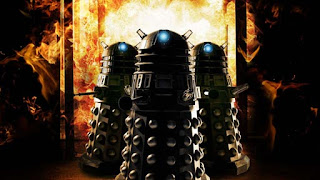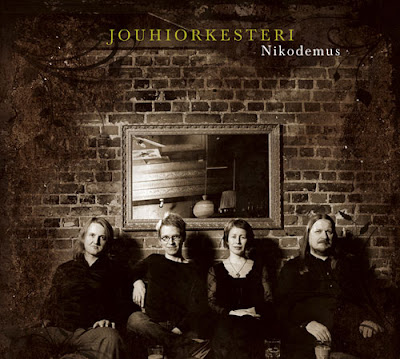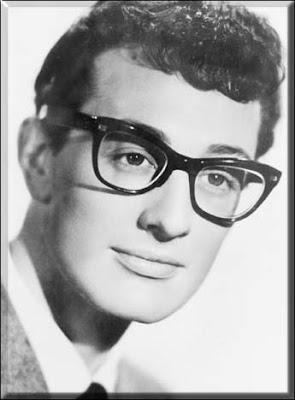 Growing up, I was a fan of the original British television series Doctor Who, with its eccentric hero, amazingly low-budget monsters and special effects, and unique sense of humor. After this series went off the air (running from 1963-1989 it remains the longest consecutive-running science fiction show ever), it was followed by a very weak Fox tv movie in the 1990s -- and then, in 2005 the BBC launched a new Doctor Who series. Impressively, this latest series manages to keep what made the original series enjoyable while adding new elements and a surprising amount of drama to the series.
Growing up, I was a fan of the original British television series Doctor Who, with its eccentric hero, amazingly low-budget monsters and special effects, and unique sense of humor. After this series went off the air (running from 1963-1989 it remains the longest consecutive-running science fiction show ever), it was followed by a very weak Fox tv movie in the 1990s -- and then, in 2005 the BBC launched a new Doctor Who series. Impressively, this latest series manages to keep what made the original series enjoyable while adding new elements and a surprising amount of drama to the series.The hero of Doctor Who remains the Doctor. As in the original series, the Doctor is an alien, a Time Lord from the planet Gallifrey who travels through time and space in the TARDIS (Time and Relative Dimensions in Space), a ship that looks like a blue police telephone box and is much larger on the inside than the outside. The Doctor is several hundreds years old, has two hearts, and when about to die can regenerate, altering his personality and appearance. (The Doctor in season one was played by Christopher Eccleston, replaced in seasons two through four by David Tennant.) He's also pretty egotistical, very odd, absolutely brilliant, and uses a sonic screwdriver for innumerable uses. The Doctor travels with a companion or two, loves to meddle, and always tries to make things better.
 This time, though, things are darker. We learn that the Doctor's species was wiped out in a war with the Daleks, leaving the Doctor as the last of his species. His virtual immortality adds a level of pathos to his relationships: as he tells one companion, "You can spend the rest of your life with me but I can't spend the rest of my life with you." And for all his good intentions, tragedy often follows the Doctor closely.
This time, though, things are darker. We learn that the Doctor's species was wiped out in a war with the Daleks, leaving the Doctor as the last of his species. His virtual immortality adds a level of pathos to his relationships: as he tells one companion, "You can spend the rest of your life with me but I can't spend the rest of my life with you." And for all his good intentions, tragedy often follows the Doctor closely.Doctor Who sports an excellent cast. As the first Doctor, Christopher Eccleston combines the new Doctor's sense of loss and optimism very well. David Tennant is a very worthy successor, bringing both a more quirky personality and a less forgiving one as well. There's a great variety in the companions. Rose Tyler (Billie Piper) is a spirited young woman who brings out the best in the Doctor. Martha Jones (Freeman Agyeman) is a more professional person, training to be a doctor, with an unrequited crush on the Doctor. And Donna Noble (British comedian Catherine Tate) adds a very silly side to things while never letting the Doctor get away with anything. (This show also introduced Captain Jack Harkness (John Barrowman), who went on to be the star of Doctor Who spin-off Torchwood.)
 As a science fiction show, Doctor Who has more than its share of monsters and exotic locales. There are numerous critters from the original series -- Daleks, Cybermen, Sontarans -- as well as original creatures from lethat statues that feed on time to the mysterious Ood. Of course, being able to go anywhere and any time opens up a, er, universe of possibilities that Doctor Who uses well. The Doctor and friend have travelled to the end of the universe, met William Shakespeare and Agatha Christie, visited an impossible planet (where they may have met Satan), battled werewolves, and saved countless lives.
As a science fiction show, Doctor Who has more than its share of monsters and exotic locales. There are numerous critters from the original series -- Daleks, Cybermen, Sontarans -- as well as original creatures from lethat statues that feed on time to the mysterious Ood. Of course, being able to go anywhere and any time opens up a, er, universe of possibilities that Doctor Who uses well. The Doctor and friend have travelled to the end of the universe, met William Shakespeare and Agatha Christie, visited an impossible planet (where they may have met Satan), battled werewolves, and saved countless lives. The plots of Doctor Who also have nice deviations from what could have been a very routine series of stories. "Father's Day" is the touching tale of what happens when the Doctor takes Rose back to the day her father died -- and the horrible consequences of what happens when she saves him. "School Reunion" has the Doctor meeting up again with Sarah Jane Smith (Elisabeth Sladen), one of his companions from the original series. And the Doctor and his companion are almost supporting characters in the episodes "Love and Monsters" and "Blink."
The plots of Doctor Who also have nice deviations from what could have been a very routine series of stories. "Father's Day" is the touching tale of what happens when the Doctor takes Rose back to the day her father died -- and the horrible consequences of what happens when she saves him. "School Reunion" has the Doctor meeting up again with Sarah Jane Smith (Elisabeth Sladen), one of his companions from the original series. And the Doctor and his companion are almost supporting characters in the episodes "Love and Monsters" and "Blink."There are times when Doctor Who can get more than a bit silly, and there's more pseudoscience and technobabble in a single episode than in an entire series of any Star Trek series. With that in mind, the newest Doctor Who is a fun show, an enjoyable romp through time and space that can sometimes surprise with its depth.
Overall grade: A-
Reviewed by James Lynch




































